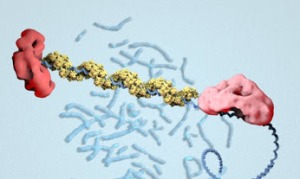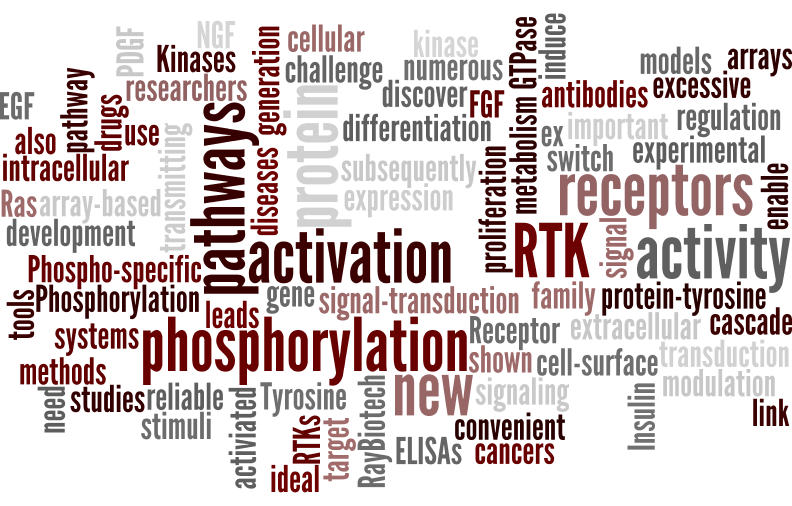Use of human samples including peripheral blood mononuclear cells (PBMCs) in drug discovery is critical for increasing the chances of success for a small molecule screen hit. A review based on recent published data!
 Several theories try to explain why many drug discovery and development projects have a moderate success rate. Even with the advances made in methods (HTS, HCA, library managment, etc), there are many hurdles for a small molecule on the long road to FDA or EMA approval.
Several theories try to explain why many drug discovery and development projects have a moderate success rate. Even with the advances made in methods (HTS, HCA, library managment, etc), there are many hurdles for a small molecule on the long road to FDA or EMA approval.
One way that may improve predicted efficacy and toxicity of drug leads is to use human samples, such as blood, early on in drug discovery programs. Peripheral blood mononuclear cells (PBMCs) can be easily used in a variety of ways during the drug discovery process to gain a better understanding of the effects of a small molecule.Cell proliferation
Drug discovery research aims are often directed toward determining whether or not small molecules affect cell proliferation, viability, and apoptosis. There are related assays available to measure the effects of drug treatment and, especially for researchers who prefer to use human samples, peripheral blood mononuclear cells (PBMCs) are often the cells of choice.
One in vitro cell proliferation assay requires pre-incubation of the PBMCs with the drugs of interest before incubation with antibodies that trigger T lymphocyte proliferation.[1] The EC50 values can then be determined based on percentage of inhibition plotted against compound concentration. Cell viability and apoptosis assays can be used with PBMCs as well to further confirm that the drugs are specifically inhibiting cell proliferation.[1] Frijters, et. al. even used these assays to validate predicted relationships between compounds and cell proliferation.
Inflammation
 A biological response that may be of interest in drug discovery is inflammation, which is directly involved in several major diseases ranging from cancer to neurodegenerative and cardiovascular disorders. PBMCs can also be used in drug screening assays to measure pro-inflammatory activity of small molecules. Neopterin and tryptophan degradation, markers for immune system activation and inflammation, can be determined in PBMCs by ELISA and HPLC, respectively.[2]
A biological response that may be of interest in drug discovery is inflammation, which is directly involved in several major diseases ranging from cancer to neurodegenerative and cardiovascular disorders. PBMCs can also be used in drug screening assays to measure pro-inflammatory activity of small molecules. Neopterin and tryptophan degradation, markers for immune system activation and inflammation, can be determined in PBMCs by ELISA and HPLC, respectively.[2]
As a proof of concept, researchers induced inflammation in peripheral blood mononuclear cells and then applied compounds known to reduce inflammation and measured response. Briefly, the screening was performed as follows:
- Peripheral blood mononuclear cells were isolated from healthy donors. (Rather than go to the trouble of recruiting donors yourself – just contact us!)
- Peripheral blood mononuclear cells were activated by addition of the mitogens phytohaemagglutinin (PHA) or concanavalin A (Con A). This results in neopterin production and tryptophan degradation. Both hallmarks of immune response and are associated with increased risk of cardiovascular and neurodegenerative diseases.
- A series of compounds with known and putative anti-inflammatory properties were added to the activated peripheral blood mononuclear cells. Compounds screened included cytokines, immunosuppressant drugs, antioxidants, plant extracts, and red and white wine.
- Canonical measurements of inflammation were analyzed by ELISA and HPLC.
The results demonstrated that drug screening using peripheral blood cells can identify compounds that ameliorate inflammatory response. Use of primary human cells in compound screening will likely streamline drug discovery by identifying compounds that will work in human cells.
Primary human peripheral blood mononuclear or monocyte-derived macrophages can also be used in drug screening to identify treatment for infectious diseases. In a simple, inexpensive method, these cells are infected with the bacteria and/or virus. Then drug activity and cell viability can be measured within these in vitro models of infection or co-infection.[3]
Cancer research
Cancer is a complex disease and the effects of chemotherapeutics only add to the complexity in making decisions for patient treatment plans. Unfortunately, the risk of being diagnosed with cancer at some point during your lifetime is estimated at 40.8% based on recent data.[4] This is a problem too big to avoid, and one which demands continued research in to disease and drug mechanisms.
Peripheral blood mononuclear cells (PBMCs) are a convenient human sample that can be used to screen and study the effects of different small molecules in the context of cancer.
 Cytotoxicity of Drugs
Cytotoxicity of Drugs
Chemotherapeutics are well known yet notorious for their toxic activity on cancer cells and other naturally renewing human cells, respectively. PBMCs can be used to investigate these drugs that target rapidly dividing cells in cancer [5] and in infectious diseases (e.g. parasites) to help understand the expected clinical results later on.
Nanoparticles
In addition to the cytotoxicity of drugs, PBMCs are also a convenient source of cells to study nanoparticles! [6] Like chemotherapeutic small molecules, some of these nanoparticles may have intriguing immunologic or antitumor activity. By comparing the activity of these drugs or nanoparticles in healthy PBMCs and disease state cells, groups like Premanathan, et al. could identify selective therapy options that will be most beneficial for the patient, limiting the unnecessary off-target effects and toxicities.
Gene Expression

Are you more interested in studying cancer drug effects at genetic or DNA level? Well, PBMCs are great for that, too! Researchers are already using them to investigate how inhibitors influence gene expression [7] and to detect DNA damage, like dangerous double stranded breaks (DSB) that can lead to cell death or tumor formation [8]. One way DSBs are identified is through recognition of phosphorylated histone protein H2AX (γH2AX) foci, a biomarker for cancer and aging.
Aging
Brace yourself for another staggering statistic: we are all getting older, every hour of every day. The good news is that there are many groups studying how we age by looking at everything from DNA strand break repair [9] to telomere length and telomerase activity [10] or even age-related alterations in immune response [11] within PBMCs. So there may be hope for finding ways to beat cancer and slow down the inevitable aging process!
When looking for a supplier of PBMCs or other blood-derived primary cells – think tebu-bio! We work with the best in class partner, HemaCare, providing high quality blood products to researchers for over 35 years. Have a look at cell types, diseases, and diversity here, or contact us to discuss your specifications.
Coming soon!
In my next post, I’ll be covering an exciting new approach that increases the efficiency and further improves the advantages of drug development with PBMCs on a systems level. Don’t miss it!
References
[1] Frijters, R. et al. Literature mining for the discovery of hidden connections between drugs, genes and diseases. PLoS Computational Biology 6, no. 9 (2010): e1000943.
[2] Jenny, M., et al. In vitro testing for anti-inflammatory properties of compounds employing peripheral blood mononuclear cells freshly isolated from healthy donors. Inflammation Research 60, no. 2 (2011): 127-135.
[3] Vijayakumar, S. et al. In vitro model of mycobacteria and HIV-1 co-infection for drug discovery. Tuberculosis 93 (2013): S66-S70.
[4] SEER Stat Fact Sheets: All Cancer Sites. http://seer.cancer.gov/statfacts/html/all.html
[5] Correale, P. et al. Journal of Clinical Oncology 23, no. 35 (2005): 8950-8958.
[6] Premanathan, M. et al. Nanomedicine: Nanotechnology, Biology and Medicine 7, no. 2 (2011): 184-192.
[7] Yilmaz, S et al. Genomics 96, no. 1 (2010): 57-65.
[8] Willitzki, A. et al. Cytometry Part A 83, no. 11 (2013): 1017-1026.
[9] Garm, C. et al. Aging Cell 12, no. 1 (2013): 58-66.
[10] Invernizzi, P. et al. Digestive and Liver Disease (2013).
[11] Longo, D. et al. The Journal of Immunology 188, no. 4 (2012): 1717-1725.




2 responses
thanks for your information sir.
sir this is prem kumar pursuing my phD in department of biotechnology,i am going to do the immunomodulatory activities of methanolic plant extracts using pbmcs.
can you please suggest me the related experiments,so that it is very helpful for me.
thank you sir
Dear Prem,
Thank you for your request on our blog.
I’m afraid we do not have direct experience with such extracts.
I can only direct you to current related publications on this.
Please find a link to a few published articles.
I hope this helps.
Isabelle